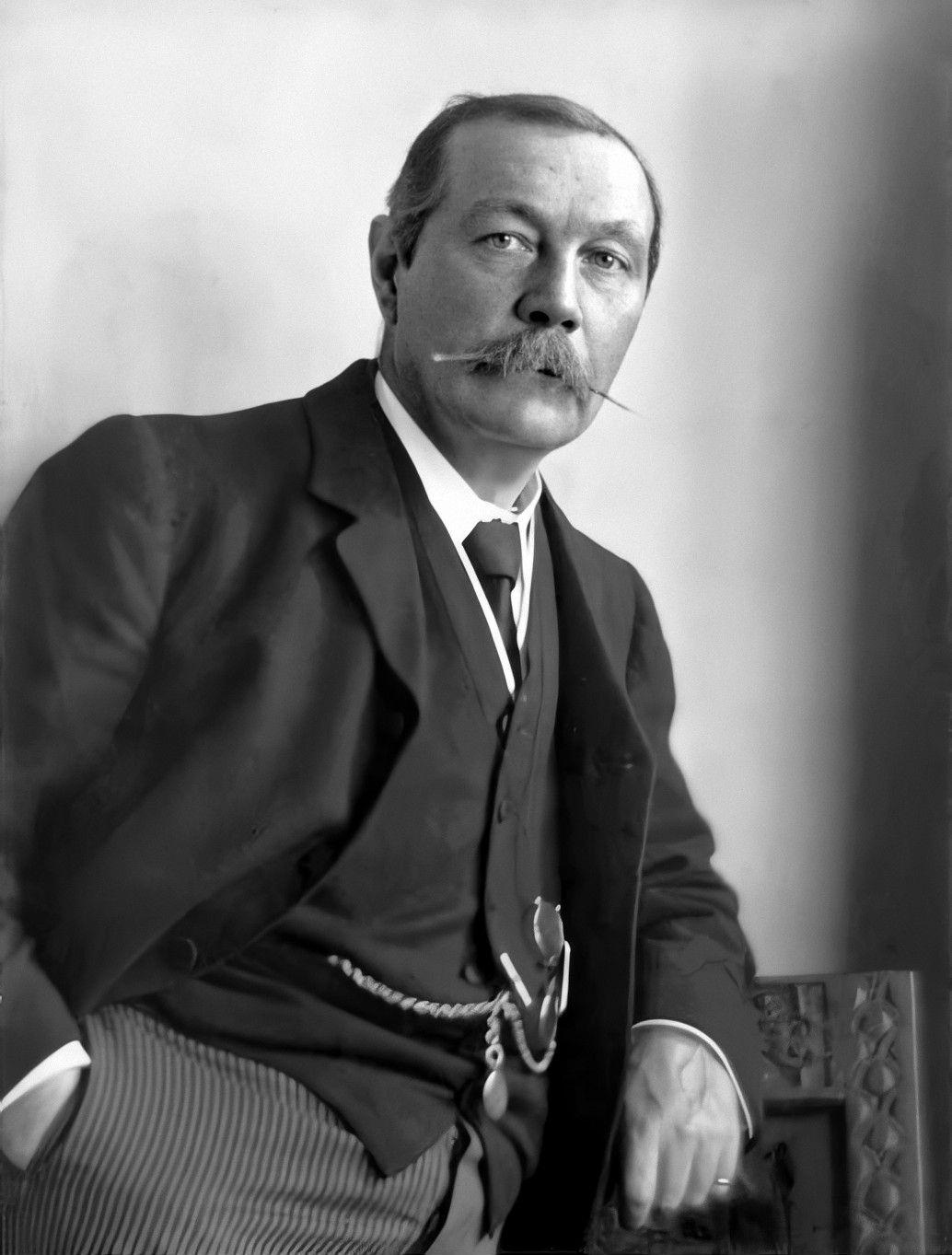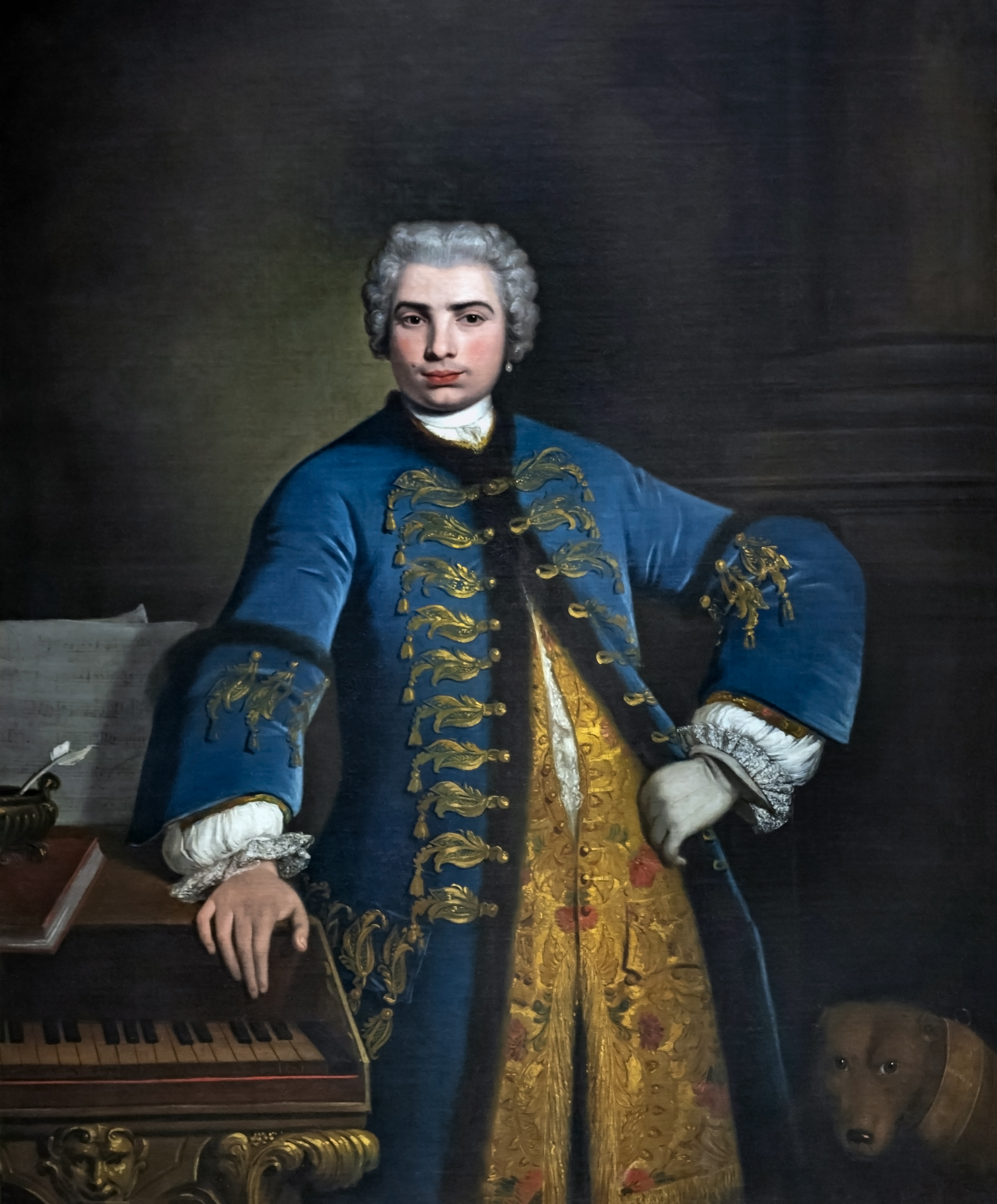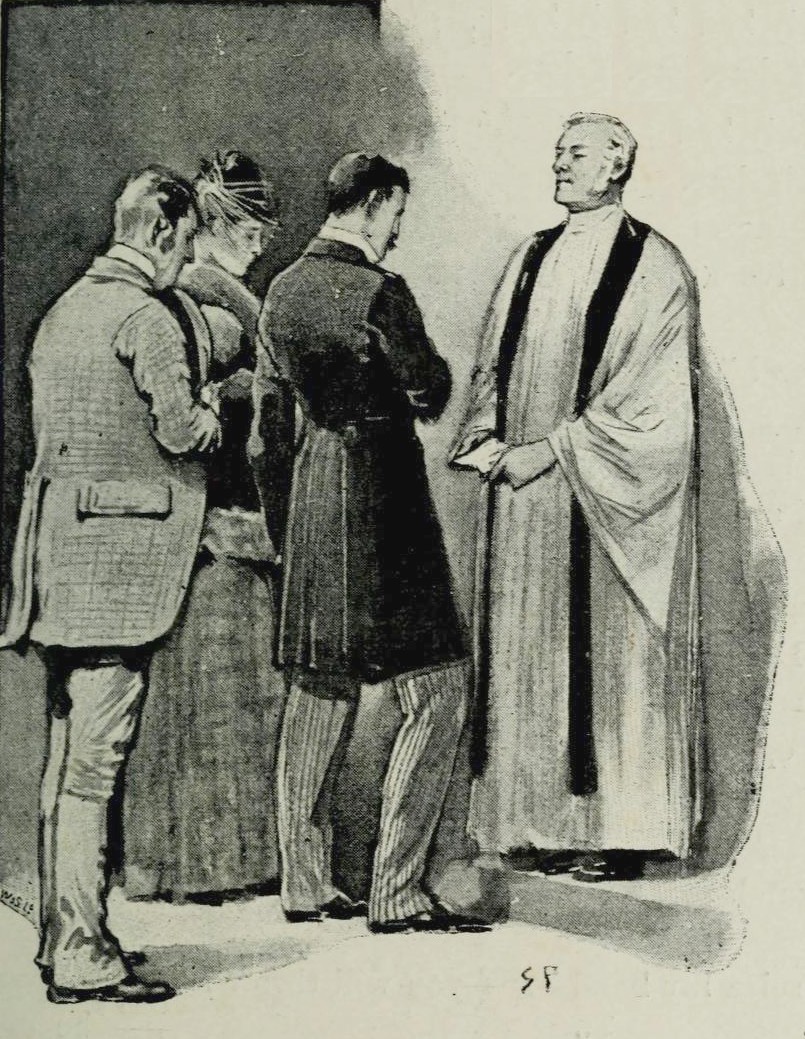|
The Canary Trainer
''The Canary Trainer: From the Memoirs of John H. Watson'' is a 1993 Sherlock Holmes pastiche by Nicholas Meyer. Like ''The Seven Percent Solution'' and ''The West End Horror'', ''The Canary Trainer'' was published as a "lost manuscript" of the late Dr. John H. Watson. In "The Adventure of Black Peter", an original Arthur Conan Doyle Holmes story from 1904, Watson mentions that his companion recently arrested "Wilson, the notorious canary-trainer, which removed a plague-spot from the East-End of London." This Wilson (who figures prominently in the Adrian Conan Doyle pastiche " The Adventure of the Deptford Horror") is not related to the eponymous character of Meyer's novel. Meyer's "trainer" is Erik, the principal figure of Gaston Leroux's 1910 novel ''The Phantom of the Opera''. It is from this unchronicled tale that The Notorious Canary Trainers (a Sherlockian scion in Madison, Wisconsin, founded in 1969) take their name. ''The Canary Trainer'' describes Holmes's adventures ... [...More Info...] [...Related Items...] OR: [Wikipedia] [Google] [Baidu] |
Nicholas Meyer
Nicholas Meyer (born December 24, 1945) is an American writer and director, known for his best-selling novel ''The Seven-Per-Cent Solution'', and for directing the films ''Time After Time (1979 film), Time After Time'', two of the ''Star Trek'' feature films, the 1983 television film ''The Day After'', and the 1999 HBO original film ''Vendetta (1999 film), Vendetta''. Meyer was nominated for an Academy Award for Best Adapted Screenplay for the film ''The Seven-Per-Cent Solution (film), The Seven-Per-Cent Solution'' (1976), where he adapted his own novel into a screenplay. He has also been nominated for a Satellite Award, three Emmy Awards, and has won four Saturn Awards. He appeared as himself during the 2017 On Cinema spinoff series ''The Trial'', during which he testified about ''Star Trek'' and San Francisco. Early life Meyer was born in New York City, New York, to a Jewish family. He is the son of Bernard Constant Meyer (1910–1988), a Manhattan psychiatrist and psychoanaly ... [...More Info...] [...Related Items...] OR: [Wikipedia] [Google] [Baidu] |
Paris
Paris () is the capital and most populous city of France, with an estimated population of 2,165,423 residents in 2019 in an area of more than 105 km² (41 sq mi), making it the 30th most densely populated city in the world in 2020. Since the 17th century, Paris has been one of the world's major centres of finance, diplomacy, commerce, fashion, gastronomy, and science. For its leading role in the arts and sciences, as well as its very early system of street lighting, in the 19th century it became known as "the City of Light". Like London, prior to the Second World War, it was also sometimes called the capital of the world. The City of Paris is the centre of the Île-de-France region, or Paris Region, with an estimated population of 12,262,544 in 2019, or about 19% of the population of France, making the region France's primate city. The Paris Region had a GDP of €739 billion ($743 billion) in 2019, which is the highest in Europe. According to the Economist Intelli ... [...More Info...] [...Related Items...] OR: [Wikipedia] [Google] [Baidu] |
Matthew Bunson
Matthew Bunson (born 1966) is an American author of more than fifty books, a historian, professor, editor, Roman Catholic theologian, Senior Contributor for EWTN, the Catholic multimedia network, Senior Fellow at the St. Paul Center for Biblical Theology, and Faculty Chair at Catholic Distance University. He is the author of the books ''Encyclopedia of the Roman Empire'', Encyclopedia of American Catholic History, and ''Pope Francis'', the first English-language biography of Pope Francis in 2013. Biography His father was a U.S. military officer, Lt. Colonel Stephen M. Bunson (1924-1984), who was also interested in old Egyptian history. Education Bunson has a B.A. in history, an M.A. in Theology, a Master of Divinity, a Doctorate in Ministry and a Ph.D. in Church History from the Graduate Theological Foundation. Career He is on the faculty of the Catholic Distance University where he teaches Church History, including Roman Catholic-Islamic relations and Medieval and American Cath ... [...More Info...] [...Related Items...] OR: [Wikipedia] [Google] [Baidu] |
Kirkus Reviews
''Kirkus Reviews'' (or ''Kirkus Media'') is an American book review magazine founded in 1933 by Virginia Kirkus (1893–1980). The magazine is headquartered in New York City. ''Kirkus Reviews'' confers the annual Kirkus Prize to authors of fiction, nonfiction, and young readers' literature. ''Kirkus Reviews'', published on the first and 15th of each month; previews books before their publication. ''Kirkus'' reviews over 10,000 titles per year. History Virginia Kirkus was hired by Harper & Brothers to establish a children's book department in 1926. The department was eliminated as an economic measure in 1932 (for about a year), so Kirkus left and soon established her own book review service. Initially, she arranged to get galley proofs of "20 or so" books in advance of their publication; almost 80 years later, the service was receiving hundreds of books weekly and reviewing about 100. Initially titled ''Bulletin'' by Kirkus' Bookshop Service from 1933 to 1954, the title was ... [...More Info...] [...Related Items...] OR: [Wikipedia] [Google] [Baidu] |
Prima Donna
In opera or commedia dell'arte, a prima donna (; Italian for "first lady"; plural: ''prime donne'') is the leading female singer in the company, the person to whom the prime roles would be given. ''Prime donne'' often had grand off-stage personalities and were seen as demanding of their colleagues. From its original usage in opera, the term has spread in contemporary usage to refer to anyone behaving in a demanding or temperamental fashion, or having an inflated view of oneself and a self-centered attitude. The prima donna in opera was normally, but not necessarily, a soprano. The corresponding term for the male lead (usually a castrato in the 17th and 18th centuries, later a tenor) is primo uomo.H. Rosenthal, H. and J. Warrack, ''The Concise Oxford Dictionary of Opera'', 2nd Edition, Oxford University Press, 1979. p. 398. Opera In 19th-century Italy, the leading woman in an opera or commedia dell'arte company was known as the ''prima donna'', literally the "first lady". Th ... [...More Info...] [...Related Items...] OR: [Wikipedia] [Google] [Baidu] |
Carlotta (The Phantom Of The Opera)
Carlotta is a fictional character from Gaston Leroux's 1910 novel ''The Phantom of the Opera''. She is the leading soprano at the Paris Opera House who is criticised by the narrator and the Phantom for the lack of emotion in her performances. In the novel, she is a minor character hailing from Spain. The first time that she is mentioned in the novel is during the chapter "The New Marguerite", where it is revealed that she could not perform at the ceremony for the former managers. Later in the novel, she is threatened by Erik that if she performs at the Opera House "a great misfortune will strike". She shrugs the warning off and performs anyway. When she does, however, croaking noises come out of her mouth and the chandelier comes crashing down. Ashamed, she hides from the public view for a few weeks, before making a return to the opera house. Carlotta is portrayed by Virginia Pearson in the original 1925 silent film with Lon Chaney. In 1929, new sound scenes were filmed and M ... [...More Info...] [...Related Items...] OR: [Wikipedia] [Google] [Baidu] |
John Watson (Sherlock Holmes)
John H. Watson, known as Dr. Watson, is a fictional character in the Sherlock Holmes stories by Sir Arthur Conan Doyle. Along with Sherlock Holmes, Dr. Watson first appeared in the novel ''A Study in Scarlet'' (1887). The last work by Doyle featuring Watson and Holmes is the short story "The Adventure of Shoscombe Old Place" (1927), but that is not the last story in the timeline of the series, which is "His Last Bow" (1917). Watson is Holmes's best friend, assistant and flatmate. He is the first-person narrator of all but four of the stories of the cases that he relates. Watson is described as a classic Victorian-era gentleman, unlike the more eccentric Holmes. He is astute and intelligent although he fails to match his friend's deductive skills. As Holmes's friend and confidant, Watson has appeared in various films, television series, video games, comics and radio programmes. Character creation In Doyle's early rough plot outlines, Holmes's associate was named "Ormond Sac ... [...More Info...] [...Related Items...] OR: [Wikipedia] [Google] [Baidu] |
Christine Daaé
Christine Daaé is a fictional character and the female protagonist of Gaston Leroux's 1910 novel ''The Phantom of the Opera'' and of the various adaptations of the work. Erik, the Phantom of the Opera and Viscount Raoul de Chagny both fall in love with her. Character history Biography Christine Daaé was born in a town near Uppsala, Sweden. Her mother died when she was six years old. Raised by her father, they travelled through rural Sweden, wandering from fair to fair, where he played the violin and she sang. They were discovered at one of these fairs by Professor Valérius, who took them to Gothenburg and then to Paris, providing for Christine's education. Christine was extremely close to her father, who told her Scandinavian fairy-tales; the tale of the "Angel of Music" was her favorite. Christine entered the Paris Conservatoire and trained for four years to become an opera singer to please her father and Mamma Valérius, the bedridden wife of the late Professor. However ... [...More Info...] [...Related Items...] OR: [Wikipedia] [Google] [Baidu] |
Coloratura
Coloratura is an elaborate melody with runs, trills, wide leaps, or similar virtuoso-like material,''Oxford American Dictionaries''.Apel (1969), p. 184. or a passage of such music. Operatic roles in which such music plays a prominent part, and singers of these roles, are also called coloratura.Steane, J. B.; Jander, Owen, "Coloratura" in Sadie (1992) 1: 907. Its instrumental equivalent is ornamentation. Coloratura is particularly found in vocal music and especially in operatic singing of the 18th and 19th centuries. The word ''coloratura'' ( , , ) means "coloring" in Italian, and derives from the Latin word ''colorare'' ("to color"). History The term ''coloratura'' was first defined in several early non-Italian music dictionaries: Michael Praetorius's ''Syntagma musicum'' (1618); Sébastien de Brossard's ''Dictionaire de musique'' (1703); and Johann Gottfried Walther's ''Musicalisches Lexicon'' (1732). In these early texts "the term is dealt with briefly and always with ... [...More Info...] [...Related Items...] OR: [Wikipedia] [Google] [Baidu] |
Edgar Degas
Edgar Degas (, ; born Hilaire-Germain-Edgar De Gas, ; 19 July 183427 September 1917) was a French Impressionist artist famous for his pastel drawings and oil paintings. Degas also produced bronze sculptures, prints and drawings. Degas is especially identified with the subject of dance; more than half of his works depict dancers. Although Degas is regarded as one of the founders of Impressionism, he rejected the term, preferring to be called a realist,Gordon and Forge 1988, p. 31 and did not paint outdoors as many Impressionists did. Degas was a superb draftsman, and particularly masterly in depicting movement, as can be seen in his rendition of dancers and bathing female nudes. In addition to ballet dancers and bathing women, Degas painted racehorses and racing jockeys, as well as portraits. His portraits are notable for their psychological complexity and their portrayal of human isolation. At the beginning of his career, Degas wanted to be a history painter, a calling f ... [...More Info...] [...Related Items...] OR: [Wikipedia] [Google] [Baidu] |
Irene Adler
Irene Adler is a fictional character in the Sherlock Holmes stories written by Sir Arthur Conan Doyle. A former opera singer and actress, she was featured in the short story " A Scandal in Bohemia", published in July 1891. Adler is one of the most notable female characters in the Sherlock Holmes series, despite appearing in only one story. While not technically a criminal and bearing no malice towards Holmes, she outsmarts him and evades his traps. Sherlock Holmes refers to her afterward respectfully as "the Woman.""A Scandal in Bohemia" by Arthur Conan Doyle. Published 25 June 1891 in the July issue of ''The Strand Magazine.'' In the original Doyle story, Watson notes Holmes has no romantic interest in Adler or in women in general, pointing out the detective only exhibits a platonic admiration for her wit and cunning. Despite this, some derivative works reinterpret Adler as a romantic interest for Holmes or as a former love who later regularly engages in crime.'' Sherlock Hol ... [...More Info...] [...Related Items...] OR: [Wikipedia] [Google] [Baidu] |

_(c112-02-14).jpg)


.jpg)
